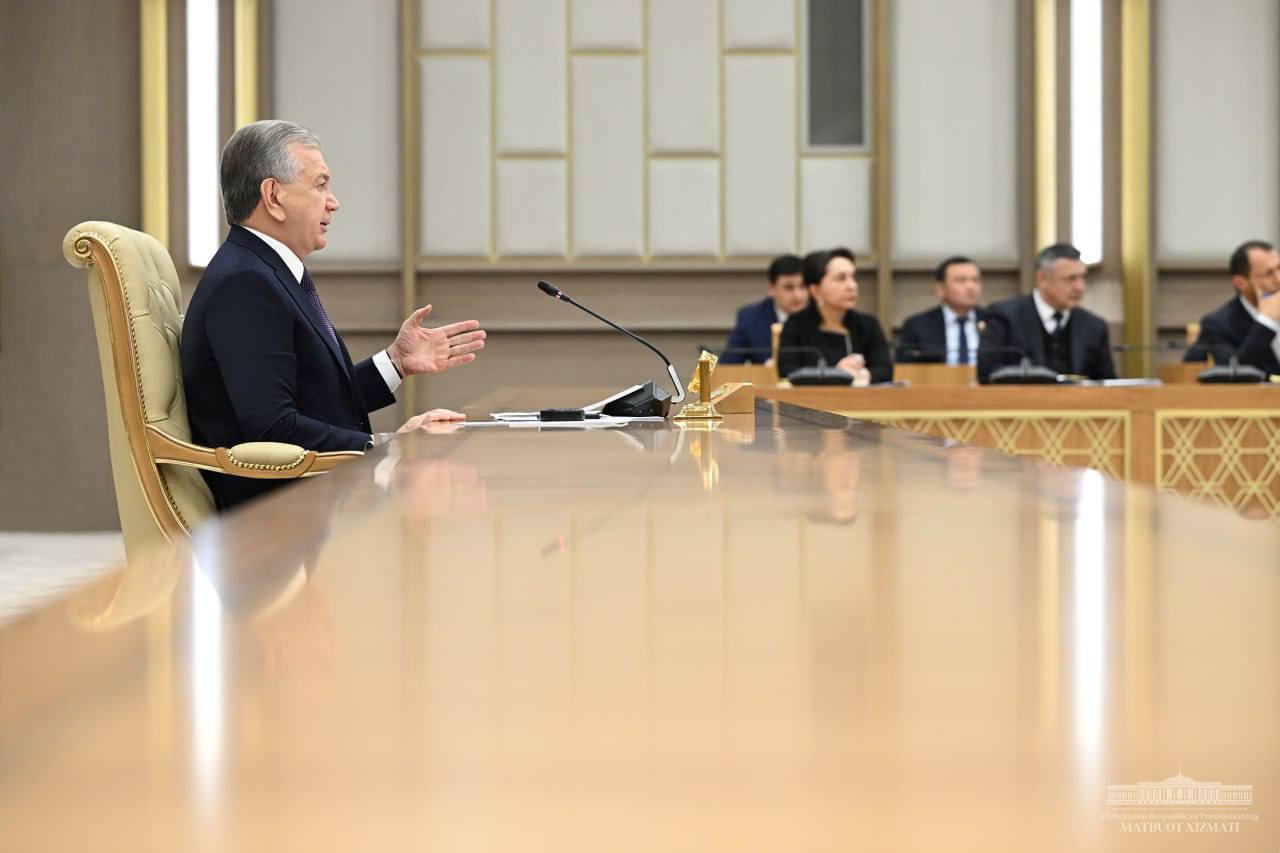
Video conference held on rational use of water and energy resources
Video conference held on rational use of water and energy resources
Tashkent, Uzbekistan (UzDaily.com) — On 7 November, President Shavkat Mirziyoyev chaired a video conference to discuss measures for the efficient use of water and energy resources and reducing losses in agriculture.
The President noted that Uzbekistan is taking active steps to implement water-saving technologies amid global environmental challenges and regional water scarcity. The concrete lining of 550 kilometers of canals and ditches has improved irrigation for 200,000 hectares, saving 450 million cubic meters of water annually. Additionally, farmers and clusters have lined 13,000 kilometers of internal water networks, while the water accounting system has doubled the water supplied to fields, managing an additional 6 billion cubic meters.
However, issues remain: delivering each cubic meter of water costs 212 soums for farmers and clusters, and in Bukhara, Kashkadarya, and Namangan regions, costs are 2-3 times higher.
Efforts to modernize large pumping stations, such as Karshi and Amu-Bukhara, have seen US$1 billion invested, but the wear on smaller pumps keeps water costs high. Despite reducing water losses by 10-15% through canal lining, some areas still experience high losses.
Next year, 800 billion soums will be allocated to line 18,000 kilometers of main canals and 94,000 kilometers of internal canals. State support, including equipment and construction materials, has halved lining costs, and direct agreements with cement suppliers could reduce costs by an additional 20%.
The accelerated water flow in lined canals facilitates small hydropower development. In Navoiy region, construction has begun on 148 small hydroelectric plants with a total capacity of 11 MW, and plans include building 2,000 micro-hydro plants, producing 600 million kWh annually.
The President cited a successful US$21 million project in Jizzakh region, where a smart water management system with meters and surveillance at 2,000 points saved 20% of water, with an additional 10% saved by repairing irrigation systems. Water management has been handed over to the private sector, with payments made in advance for the first time.
There are over 1,600 irrigation pumping stations in Uzbekistan, requiring substantial energy. Therefore, 2025 has been designated as the year to increase irrigation pump efficiency. Collaborating with private partners to install energy-efficient pumps and solar panels could cut energy consumption by 20%. In Khorezm region, farmers using such solutions earn 7-8 million soums monthly by selling excess energy to the state.
Currently, water-saving technologies cover 2 million hectares, saving 2 billion cubic meters last year. However, some equipment is underutilized, an issue that will be strictly monitored. Next year, an additional 500,000 hectares will adopt water-saving technologies, and the successful field-leveling subsidy program trialed in Karakalpakstan will be expanded to Khorezm and other regions.
Floodwater harvesting will provide another water source, with reservoirs planned in Samarkand, Kashkadarya, Surkhandarya, Namangan, Fergana, and Tashkent regions to improve water supply across 50,000 hectares. Uzbekhydroenergy has developed a two-year plan to work on this initiative.
The President emphasized that digitalization is essential for modernizing water management. Online monitoring and smart meters have been introduced at pumping stations, but a unified data collection and analysis system is still lacking. Consequently, a Digitalization Center will be established under the Ministry of Water Resources to manage a centralized accounting and control system.
Officials were tasked with developing a priority project program through 2030. Proposals and input from ministers, khokims, and experts were also reviewed during the meeting.
#Shavkat Mirziyoyev